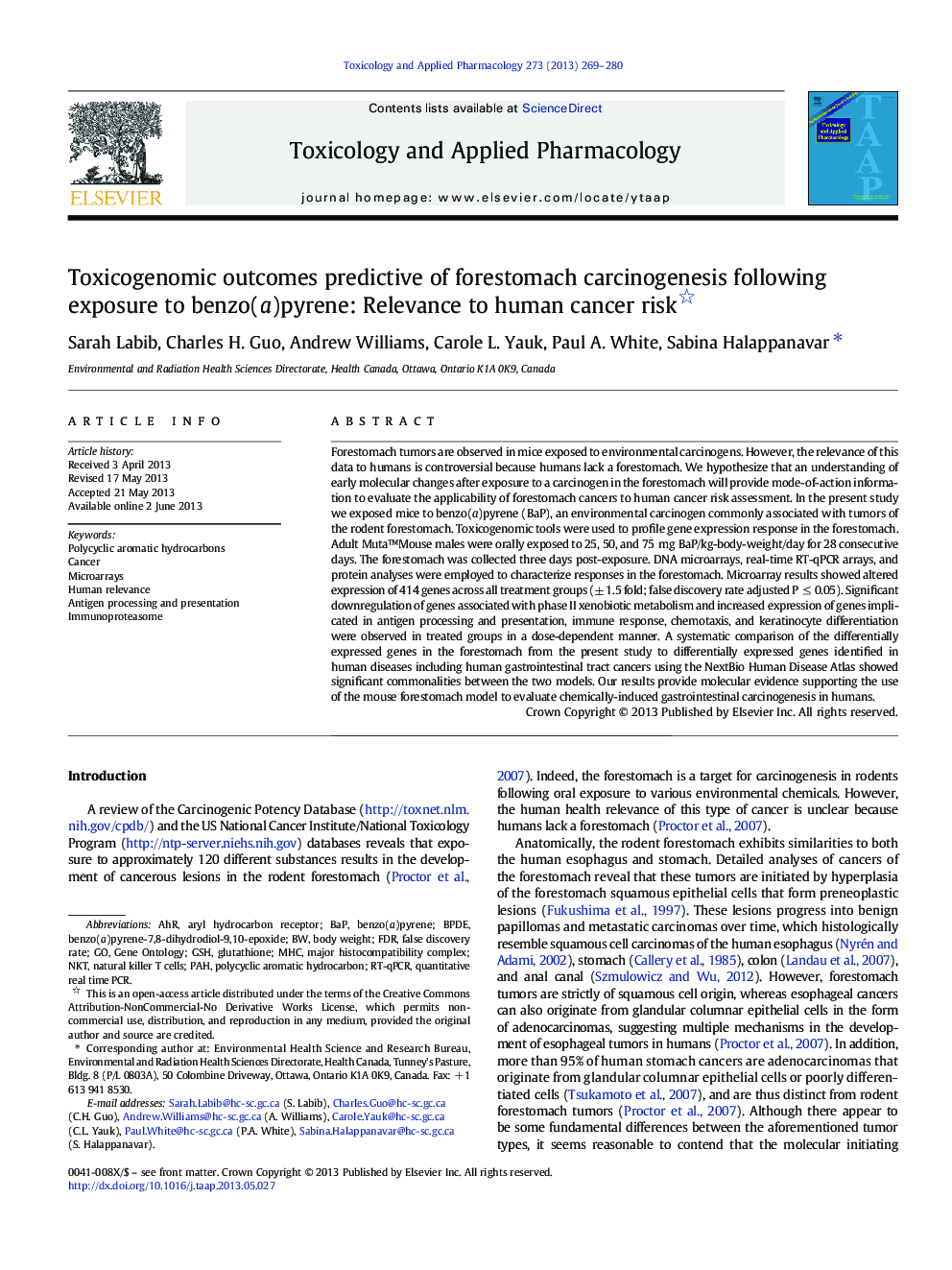| Article ID | Journal | Published Year | Pages | File Type |
|---|---|---|---|---|
| 5846560 | Toxicology and Applied Pharmacology | 2013 | 12 Pages |
Abstract
Forestomach tumors are observed in mice exposed to environmental carcinogens. However, the relevance of this data to humans is controversial because humans lack a forestomach. We hypothesize that an understanding of early molecular changes after exposure to a carcinogen in the forestomach will provide mode-of-action information to evaluate the applicability of forestomach cancers to human cancer risk assessment. In the present study we exposed mice to benzo(a)pyrene (BaP), an environmental carcinogen commonly associated with tumors of the rodent forestomach. Toxicogenomic tools were used to profile gene expression response in the forestomach. Adult Mutaâ¢Mouse males were orally exposed to 25, 50, and 75 mg BaP/kg-body-weight/day for 28 consecutive days. The forestomach was collected three days post-exposure. DNA microarrays, real-time RT-qPCR arrays, and protein analyses were employed to characterize responses in the forestomach. Microarray results showed altered expression of 414 genes across all treatment groups (± 1.5 fold; false discovery rate adjusted P â¤Â 0.05). Significant downregulation of genes associated with phase II xenobiotic metabolism and increased expression of genes implicated in antigen processing and presentation, immune response, chemotaxis, and keratinocyte differentiation were observed in treated groups in a dose-dependent manner. A systematic comparison of the differentially expressed genes in the forestomach from the present study to differentially expressed genes identified in human diseases including human gastrointestinal tract cancers using the NextBio Human Disease Atlas showed significant commonalities between the two models. Our results provide molecular evidence supporting the use of the mouse forestomach model to evaluate chemically-induced gastrointestinal carcinogenesis in humans.
Keywords
BPDEMicroarraysAHRNKTPAHFDRBAPRT-qPCRGSHImmunoproteasomeBenzo(a)pyreneHuman relevancequantitative real time PCRCancernatural killer T cellsmajor histocompatibility complexMHCfalse discovery rateGene ontologyPolycyclic aromatic hydrocarbonPolycyclic aromatic hydrocarbonsbody weightantigen processing and presentationGlutathionearyl hydrocarbon receptor
Related Topics
Life Sciences
Environmental Science
Health, Toxicology and Mutagenesis
Authors
Sarah Labib, Charles H. Guo, Andrew Williams, Carole L. Yauk, Paul A. White, Sabina Halappanavar,
